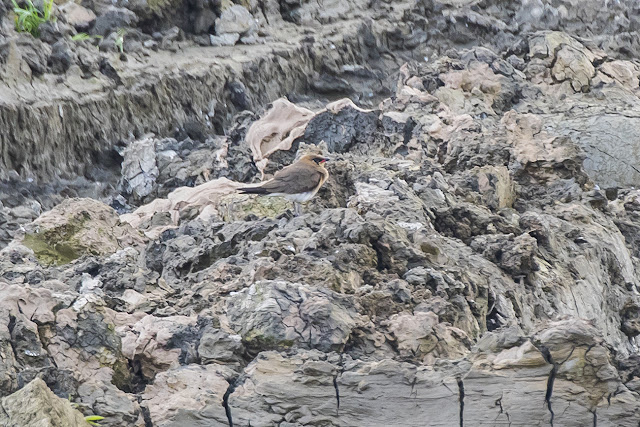Whenever you see Red-necked Phalaropes at Long Valley you know it is migration season, up to 9 were present last week, and all of them were minding their own business as Phalaropes do, therefore you can get incredibly close to them.
Red-necked Phalarope
The elusive Eastern Water Rail only showed briefly for me, this individual was extremely shy and even after a long wait it did not reappear. Greater Painted Snipes have already started breeding at Long Valley, they have been showing fairly well of late, occasionally I would run into them at close range, where they just hunker down to evade any attention. They are cute when they do that.
Eastern Water Rail
Greater Painted Snipe - male
Greater Painted Snipe - female
Greater Painted Snipe - defensive mechanism...
A juvenile Bluethroat was seen at Long Valley as well, although they have been fed by one of the farmers for the photographers, they supposedly have to pay to photograph them in his property? This photo was taken outside during 'off hours'. Common Mynas are common, but I rarely bother to take a good photograph of them, when a pair feed at close range I suppose it was an opportunity not to miss.
Bluethroat - juvenile
Common Myna
One of the more interesting observation at Long Valley were a up to four Red-rumped Swallows picking up mud, obviously to build nest somewhere. Only a handful breed in Hong Kong, and I've only ever seen their nest a few times.
Red-rumped Swallow - gathering nesting materials
Tai Po Kau is always pleasant in spring, not only do you get a chance to see some of the spring migrants, but all the resident birds are in song as well. A Crested Serpent Eagle had been frequenting the lawn area, I suspect it maybe the same individual from previous years.
Crested Serpent Eagle
Many resident forest species had gotten into pairs, busy finding places to nest or gathering nesting materials. A pair of Silver-eared Mesias were doing just that, and allowed very close views. Black-throated Laughingthrushes were in song and a few of them showed extremely well. I saw my first Hainan Blue Flycatcher of the year, up to 3 singing males were recorded. Plain Flowerpeckers were again in full song, and one of them showed very well for me, you can hear them everywhere, but I've yet been able to locate them during winter months.
Silver-eared Mesia
Black-throated Laughingthrush
Hainan Blue Flycatcher - male
Plain Flowerpecker
Oriental Pratincoles are now coming through, I saw up to 6 on a dried fish pond last week. While at Tai Sang Wai many Black-faced Spoonbills are making good use of the lowered water level on fish ponds, feasting on the fish there before heading back north.
Oriental Pratincole
Black-faced Spoonbill - Great Egret eyeing it's catch intently, the Spoonbill got it down in the end
Finally, a birding oddity came in form of a Yellow Wagtail at Tai Sang Wai. Since the split of the species into Western and Eastern, all of the subspecies we have recorded in Hong Kong had been of Eastern, and this individual which was identified as race leucocephala was within the Western Yellow Wagtail complex, also known as the White-headed Yellow Wagtail, a subspecies that breeds near Mongolia and Russia, wintering in India.
Western Yellow Wagtail - race leucocephala
I am no expert in such matters, but it seems most people agree with this as Western Yellow Wagtail, if so this may well be a HK 1st, we will have to wait till the final verdict from the record committee. Either way, it attracted a lot of attention from fellow birders, here John Holmes and David Diskin viewing the bird from the opposite side of the road, birds are interesting but birders are sometimes more so!
Birder looking at birders looking at bird!





















Keep the photos coming. enjoyed the read.
ReplyDelete